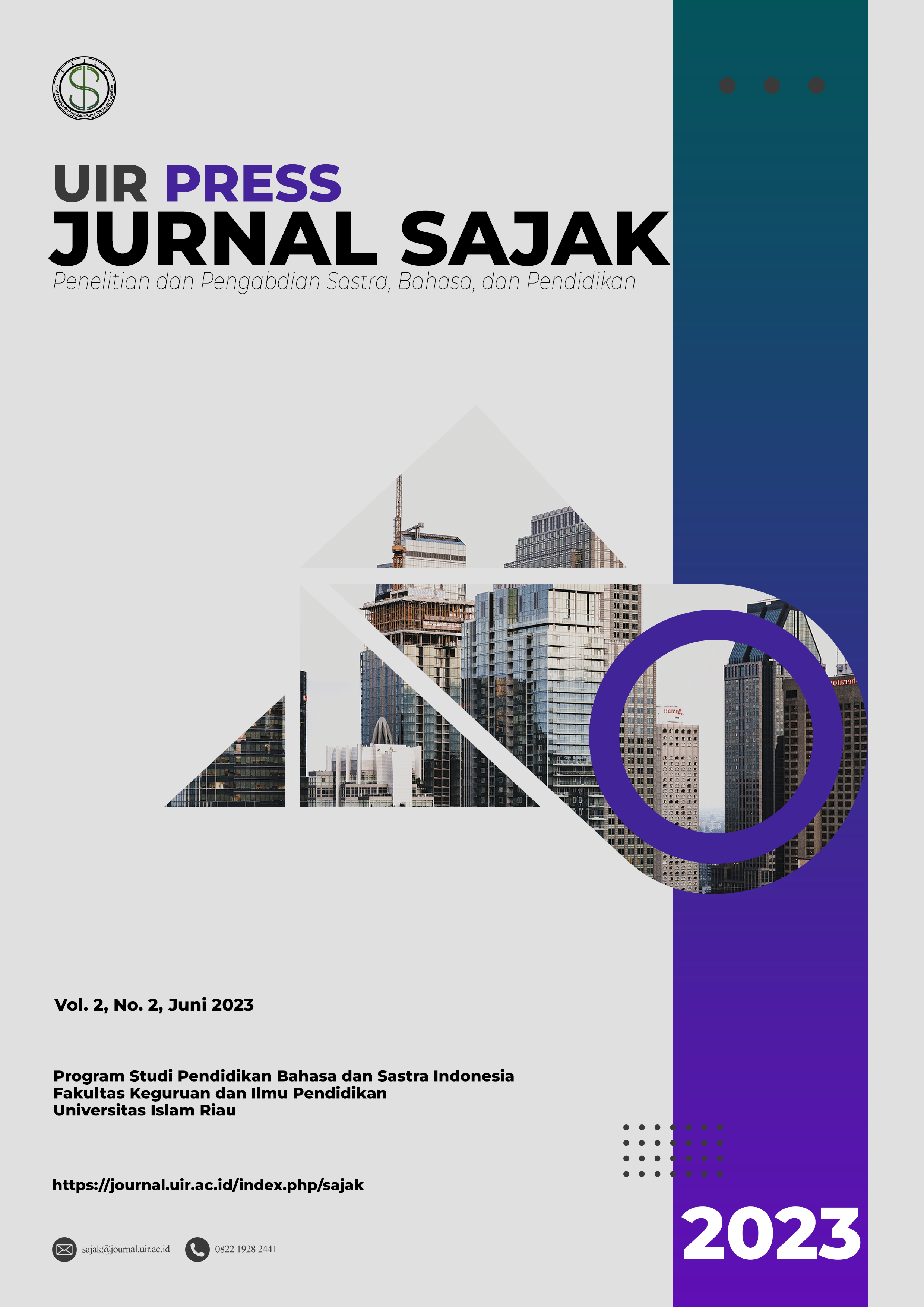Penguasaan Kosakata Bahasa Indonesia pada Anak Usia 4-6 Tahun: Tinjauan Psikolinguistik
DOI:
https://doi.org/10.25299/s.v2i2.11822Keywords:
language, vocabulary, vocabulary mastery, psycholinguisticsAbstract
The purpose of this study was to determine the proportion of children aged 4, 5 and 6 years at TK Aisyiyah Bustanul Athfal V Pekanbaru who are fluent in Indonesian vocabulary and language. In this study used a descriptive and qualitative approach. The strategy of noting and keeping records is used in the fundamental method. An approach based on a psycholinguistic approach was used to present the data analysis. Data analysis revealed that children aged 4, 5, and 6 years had varying levels of Indonesian vocabulary proficiency. For children under the age of four, AAS has 122 vocabularies with 8 word categories, AKD has 140 vocabularies with 11 word categories, and TAD has 61 vocabularies with 7 word categories. Then, a 5 year old child named MR mastered 203 words with 11 categories, JSQ mastered 216 words with 11 categories, CM mastered 146 words with 9 categories, AAR mastered 155 words with 9 categories, AMJ mastered 185 words with 10 categories, and MKM able to master 134 words with 9 categories. After that, a six-year-old child named AH knows 275 words in 12 word categories, SA knows 379 words in 11 word categories, MMA knows 175 words in 10 word categories, MA knows 216 words in 12 word categories, and HL knows 214 words. . Words are divided into eleven categories. words, and MGF is proficient in 265 vocabularies and 12 word categories. The percentage of children who are proficient in word and vocabulary categories varies. At the age of four, 11.20 percent of children have mastered vocabulary, at the age of five, 36.01 percent, and at the age of six, 52.79 percent. Children's vocabulary mastery is influenced by various factors, including motivation, age, formal presentation, first language, and environmental factors.
Downloads
References
Aryanti, Y., Indarti, M. D., & Priyanto, A. (2019). Analisis Penggunaan Bahasa Prokem Melalui Media Sosial Whats Application (WA) Pada Siswa SMA. Parole (Jurnal Pendidikan Bahasa Dan Sastra Indonesia), 2(3), 305–312.
Baiiasa, P. (2021). artikel jurnai. 52.
Catfish, A. (2020). Effects of Long Jack , Eurycoma Longifolia on Sperm Quality and Quantity of Effects of Long Jack , Eurycoma Longifolia on Sperm Quality and Quantity of African Catfish , Clarias Gariepinus. December.
Markus, N., Kusmiyati, K., & Sucipto, S. (2018). Penguasaan Kosakata Bahasa Indonesia Anak Usia 4-5 Tahun. Fonema, 4(2), 102–115. https://doi.org/10.25139/fonema.v4i2.762
Pangesti, F. (2019). Senyapan Dan Kilir Lidah Berdampingan Dalam Produksi Ujaran. Hasta Wiyata, 2(1), 8–17. https://doi.org/10.21776/ub.hastawiyata.2018.002.01.02
Rafiek, M. (2018). Ekspresi Verbal Menolak Dan Memohon Anak Laki-Laki Usia 4,9 Sampai 5,1 Tahun: Studi Kasus Pada Muhammad Zaini. Kandai, 14(1), 77. https://doi.org/10.26499/jk.v14i1.404
Soetikno, N., & Mar, S. (2021). TEACCH for Parents and Child with Autism Spectrum Disorder : A Review of the Literature. Advances in Health Sciences Research, 41(Ticmih), 190–194.
Sugiyono. (2017). Metode Penelitian Pendidikan Pendekatan Kualitatif, Kuantitatif, dan R&D. Alfabeta.
Umi, atun zahro, Noermanzah, & Syafryadin. (2020). Penguasaan Kosakata Bahasa Indonesia Anak dari Segi Umur, Jenis Kelamin, Jenis Kosakata, Sosial Ekonomi Orang Tua, dan Pekerjaan Orang Tua. Seminar Nasional Pendidikan Bahasa Dan Sastra, 1(1), 187–198. https://ejournal.unib.ac.id/index.php/semiba/article/view/13675





























